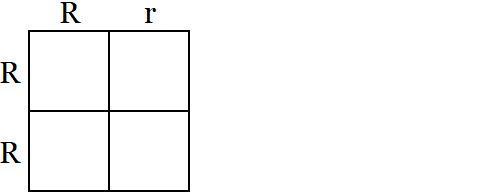What is the correct order of Earth's layers, from outermost to innermost?
A. Core, Mantle, Crust
B. Mantle, Crust, Core
C. Crust, Mantle, Core
D. Crust, Core, Mantle
C. Crust, Mantle, Core
What is the difference between a producer and a consumer?
A. A producer eats the energy that other organisms produce; a consumer is capable of making its own energy
B. A producer makes its own energy; a consumer needs to get energy by eating other organisms
C. A producer is advanced enough to cook its own food; a consumer has to purchase food
D. A producer only eats plants; a consumer feeds on live and dead animals.
B. A producer makes its own energy; a consumer needs to get energy by eating other organisms
At the temperature of 0 K, absolute zero,
A. Water reaches its boiling point
B. All thermal motion stops
C. Water reaches its freezing point
D. Solid objects break down
B. All thermal motion stops
______ are made up of ______
A. Atoms; molecules
B. Molecules; atoms
C. Elements; compounds
D. Electrons; atoms
B. Molecules; atoms
The lowest layer of the atmosphere is the:
A. Stratosphere
B. Mesosphere
C. Thermosphere
D. Troposphere
D. Troposphere
Two tectonic plates move sideways past each other. What type of boundary does this create?
A. Convergent plate boundary
B. Transform Fault Boundary
C. Divergent Plate Boundary
D. Oceanic-Continental Plate Boundary
B. Transform Fault Boundary
An omnivore
A. Eats only plants.
B. Eats non-living beings.
C. Eats only animals.
D. Eats both plants and animals
D. Eats both plants and animals
Decreasing the force behind an object will _______ the acceleration it experiences.
A. decrease
B. increase
C. remain the same
D. not enough information to tell
A. decrease
Which of the following is a phase change from a solid to a gas?
A. vaporization
B. deposition
C. evaporation
D. sublimation
D. sublimination
Based on the following punnet square, what are the odds of having a homozygous dominant offspring?
A. 0%
B. 25%
C. 50%
D. 100%
C. 50%
Marble forms when limestone experiences great heat and pressure. Marble is a type of _____ rock.
A. Metamorphic
B. Igneous
C. Sedimentary
D. Mantle
A. Metamorphic
Metamorphic rocks are created by heat, pressure, or chemical reactions.
Available energy is ______ as it moves up to higher trophic levels in an energy pyramid.
A. Increased
B. Reduced
C. Evaporated
D. Produced
B. Reduced
The strength of gravitational force depends on
A. the masses and the weight of each object
B. the masses of both objects
C. the mass of an object
D. the masses of each object and the distance between their centers
D. the masses of each object and the distance between their centers
Which of the following is true of an ion?
A. it has a positive charge
B. it has a negative charge
C. it occurs after a movement of electrons
D. it occurs when an atom does not have the same amount of protons and neutrons
C. it occurs after a movement of electrons
_______ energy can be potential or kinetic.
A. thermal
B. mechanical
C. radiant
D. sound
B. mechanical
The continuous movement of water among the oceans, atmosphere and land is called the:
A. Life Cycle
B. Transpiration Process
C. Evaporation Process
D. Water Cycle
D. Water Cycle
What bodily system gathers, interprets, and responds to information from both internal and external environments, and allows us to use emotions and the 5 senses?
A. Circulatory system
B. Muscular system
C. Reproductive system
D. Nervous system
D. Nervous System
The speed of _____ is faster than the speed of ____.
A. sound; light
B. light; sound
C. kinetic energy; potential energy
D. thermal energy; gravitational pull
B. Light; sound
Boron has an atomic number of 5 and an atomic mass of 11. How many neutrons does Boron have?
A. 6
B. 16
C. 4
D. not enough information
A. 6
Lemon juice has a pH of 2. This means that lemon juice is a(n)
A. base
B. acid
C. alkaline
D. compound
B. acid
What gas makes up the majority of dry air?
A. Oxygen
B. Carbon Dioxide
C. Nitrogen
D. Hydrogen
C. Nitrogen
The circulatory system is responsible for:
A. moving bones, muscles, and connective tissues
B. transporting materials to and from the cells
C. making the heart beat
D. allowing a creature to make offspring
B. Transporting materials to and from the cells
A book that is sitting atop a high shelf is an example of
A. gravitational force
B. kinetic energy
C. potential energy
D. mechanical energy
C. potential energy
When an ion loses an electron, it is known as
A. Stabilization
B. Oxidation
C. Ionization
D. Reduction
B. Oxidation